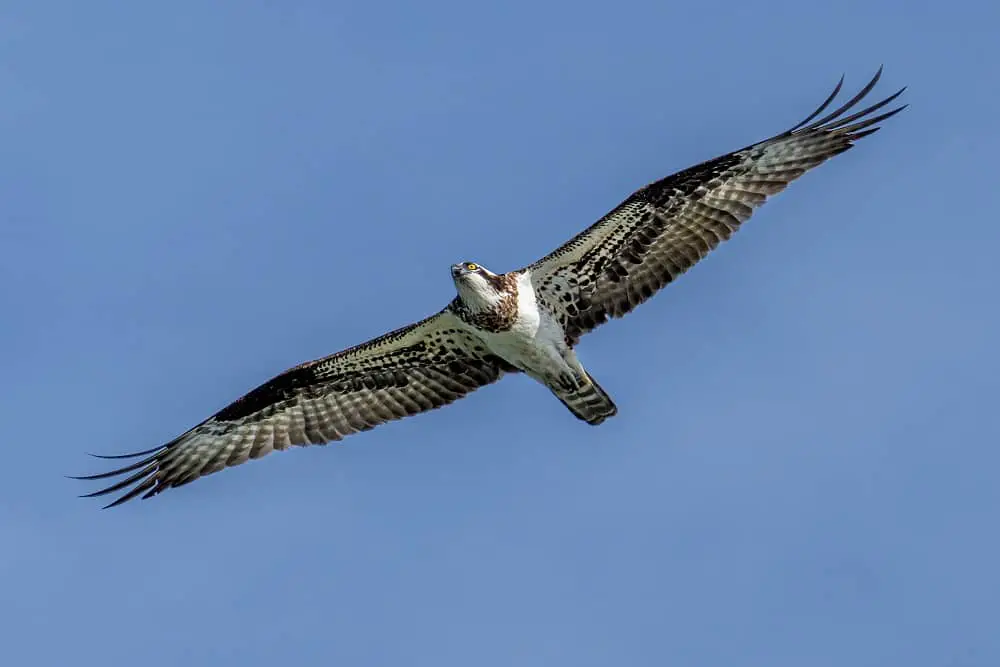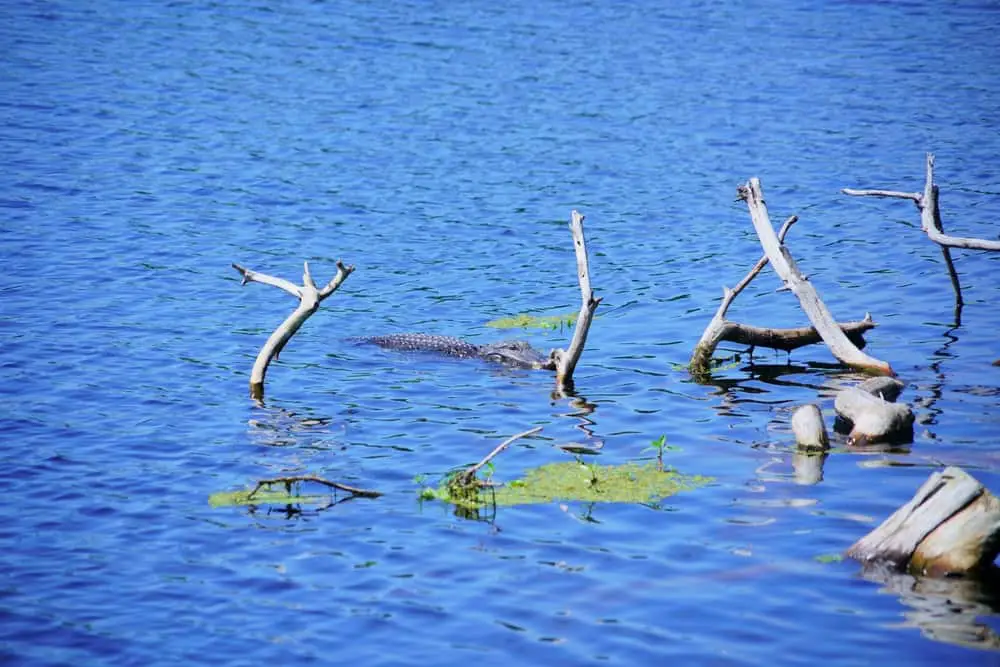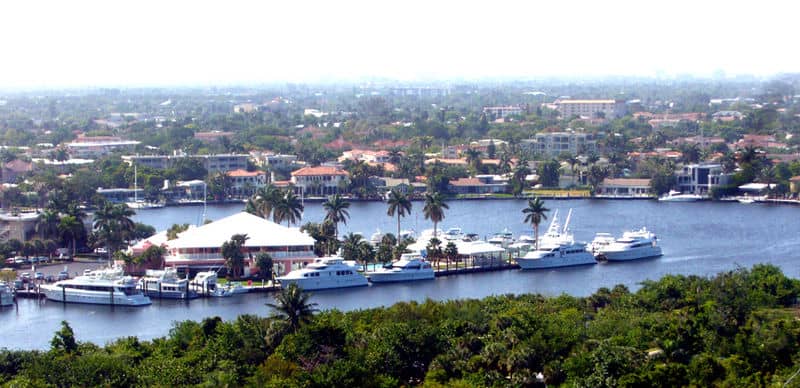Are you ready to spread your wings and embark on a wild journey through the Sunshine State? Well, hold onto your feathers because today we’re diving headfirst into the fascinating world of falcons in Florida!
These majestic creatures have been making quite the stir lately, leaving both bird enthusiasts and curious Floridians scratching their heads.
I hear the question a lot, “Where can I see wild falcons in the South?” Florida! Florida is home to many different raptors: Northern Harriers, Osprey, Red-tailed Hawks, Broad-winged Hawks, and Ferruginous Hawks to name a few.
Are there Falcons in Florida? Will I find them on a windowsill, or will they swoop at me from behind a palm tree?
There are plenty of myths surrounding the peregrine falcon and its native environment.
As the sun rises over the Florida landscape, a new day begins for the majestic falcons that live here.
But fear not, my feathered friends, for we are here to unravel the enigma and uncover what’s really going on with these elusive falcons. So fasten your seatbelts (or should I say wing straps?), because it’s time to soar high above the palm-fringed landscapes of Florida in search of some feathery truths!
Are there Falcons in Florida?
Most of these birds are found in North America and are adapted to live in urban, suburban, and rural areas and their way of life depends on the environment and climate there.
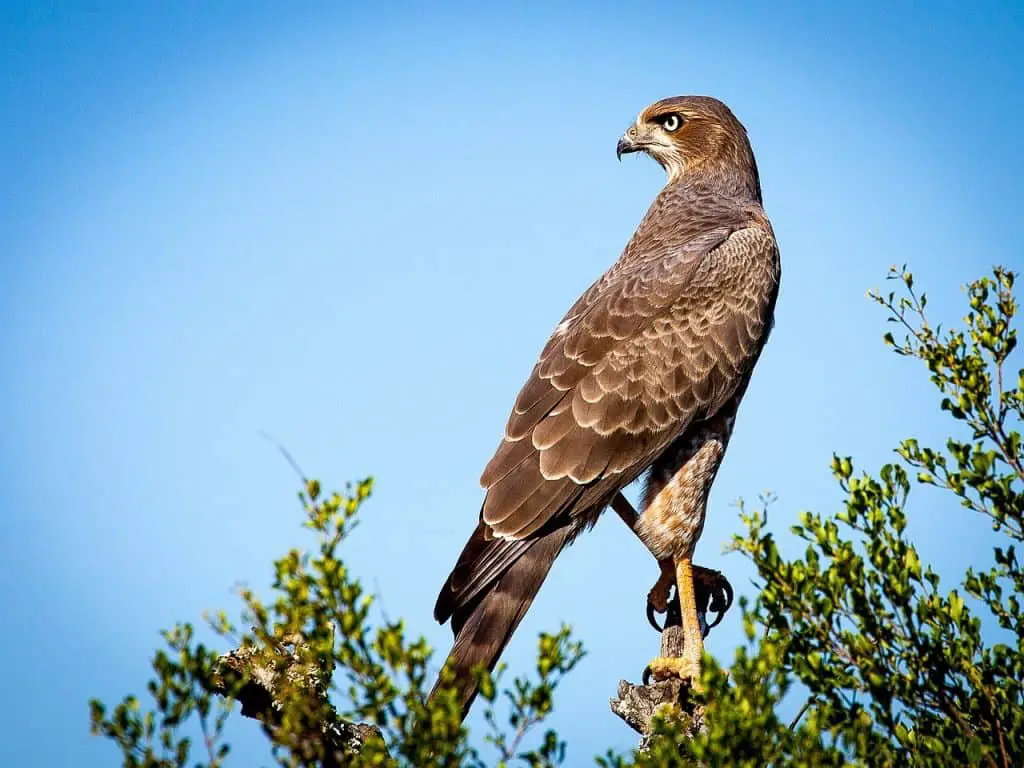
Peregrine falcons do not breed in Florida, but they are seen every fall during the seasonal migration.
This type of bird will soon become accustomed to the environment.
Instead of size, the easiest way to tell whether the bird of prey in flight is a hawk or a falcon is the shape of its wings that can be used to guess.
Unlike hawks, falcons have long, slender wings. Hawks have wings that are broad in body and usually have rounded ends that distinguish them from falcons.
In the spring season, you can also see the Falcon, one of the most beautiful birds in Florida. You may introduce them to their beauty and identity.
These birds are some of the most skilled hunters in the world, and they have been known to take down prey much larger than themselves.
Falcons are a protected species in Florida, and their population has been slowly increasing in recent years. Watching these incredible birds soar through the air is an unforgettable experience and one that more people should take advantage of.
Do You See Falcons Or Hawks in Florida?
Do you see falcons or hawks in Florida? Both species are common throughout the state, but they have different habits. Some hawk species migrate while others spend the entire year in the same place.
The sharp-shinned hawks migrate in the fall, but the red-tailed hawk spends its entire life in Florida and other cities across North America. Its favorite spot is a telephone pole.
The Sharp-shinned hawk, or Swainson’s hawk, is the most common owl in the state. During the spring and summer, it can be seen flying over the grassy fields and trees.
In winter, it migrates to South America. Its name comes from its distinctive red-orange color and small head. Its wingspan is short and rounded.
In Florida, you can find three species of falcons. These birds are known for their speed and exceptional hunting abilities.
They have dark-blue feathers on the back and chest and sharp black talons. Among the three species, the Peregrine falcon is the largest and fastest, and its wingspan can reach seven feet! However, they may attack people or pets if disturbed.
In addition to the Sharp-shinned hawk, you can also see other species. These raptors are smaller than other hawks and may be spotted in backyard feeders.
They mainly feed on smaller birds and reptiles, and some have even been observed performing acrobatics over the nesting territory. In Florida, a few species of hawks are common, such as the Short-tailed hawk, which lives year-round in the state.
3 Types of falcons live in Florida!
1. Peregrine Falcon
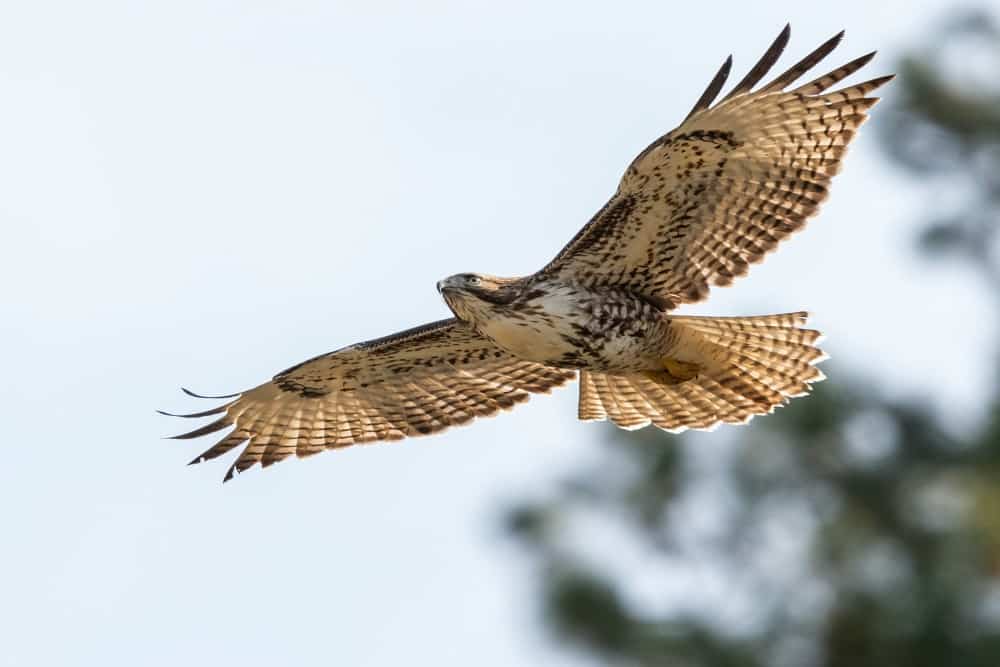
This type of Peregrine falcon is found on every continent where there is greenery. It likes to build nests in high places. This cannot happen in Antarctica.
They are present in every city in Florida. This type has many habits due to which this type is very popular and common. Apart from trees, they may like to live on the top of a building.
Most are found in the area between the two sides of Florida. Because Florida has both beaches, the area with moderate low winds may be a stronghold. This type of falcon is abundant in Florida.
The Fastest Animal on the Planet
It is often said that the cheetah is a very fast animal on the earth with a speed of 75 miles per hour, but this is not the case because the peregrine falcon is faster than that.
When a peregrine falcon dives, it can reach speeds of up to 200 miles per hour (320 kilometers per hour). Therefore, its speed can be very high on the ground. The peregrine falcon is also a powerful bird and it is common for it to carry more weight than any other prey.
Origin and Behavior
Basically, they prey on other birds and make them their food source. Its victims are widespread. According to research, 450 birds or other animals fall into its category of prey، extremely common birds, including ducks, gulls, pigeons, and songbirds.
These raptors have been observed to kill small hummingbirds and large ones like sandal cranes.
- Length: 13-23 inches / 34-58 cm.
- Weight: 12-53 oz. / 330-1500 grams
- Wings: 29-47 inches / 74-120 cm
2. American Kestrel (Falco Sparverius)
Is a Kestrel a Hawk Or a Falcon?
If you have ever wondered, “Is a kestrel a bird of prey or a falcon?” you’re not alone. The bird of prey can be found in many parts of the world.
Despite its hooked bill and sharp talons, it belongs to the falcon family and not to the hawk family.
Like falcons, kestrels are able to hybridize with other species through artificial insemination.
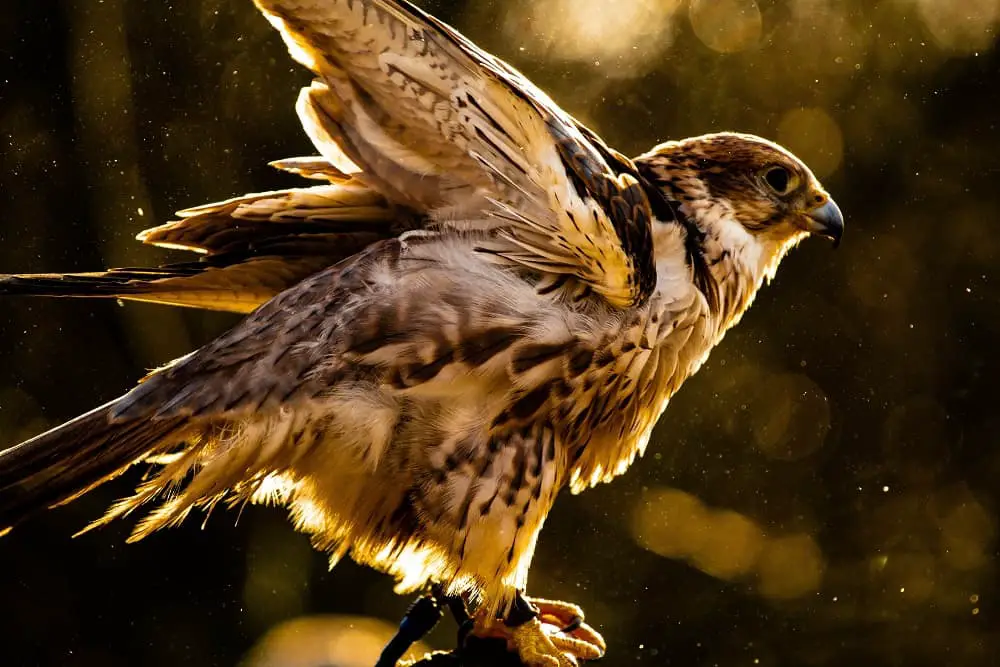
The American kestrel is the smallest falcon in Florida and is about the size of an American robin. This falcon is small in size but a very strong predator.
The most important strategy for catching prey is to search for insects, small animals, and small birds by roaming at low altitudes.
Well, their food is prey, but their wide variety of food is one reason they can capture the ecosystems from Central Alaska to the southern tip of South America.
Sometimes life can be difficult when you are the smallest falcon in size because they are eaten by large raptors as well as rat snakes and corn snakes as prey.
American Kestrels are unlike most other falcons
The wings have been shown solely to give a sense of proportion.
This only happens at the bottom. On the other hand, in terms of females, have rusty backs and wings, but with gray.
Their bellies are buff or tan with prominent brown lines and make them look slightly different. The heads of the two sexes are interchangeable, however, white with a blue-gray cap.
- Length: 9-12 inches / 22-31 cm
- Weight: 2.8-5.8 oz. / 80-165 grams
- Wings: 20-24 inches / 51-61 cm
While both hawks and falcons have a similar shape and behavior, the American Kestrel is smaller and less robust than its counterparts.
Its fast metabolism means it needs to be constantly monitoring its weight. It is also thinner than a Red-tailed hawk and falcon relatives. Because of its size and fragile body, it requires careful management of its weight, which can vary by as little as a tenth of a gram.
The American Kestrel is the smallest and most familiar falcon in North America. You’ll often see it perched on wires along highways or hovering over fields.
It usually nests in tree cavities and sometimes relies on nest boxes put up by conservationists. Although kestrels typically hunt from high perches, they also chase insects, birds, and bats.
American Kestrels have long, slender wings and a broader range than their falcon counterparts. American Kestrels breed in warm climates.
Females arrive on wintering grounds first and establish territories in areas with more trees. Female American Kestrels nest in cavities and squirt feces on the cavity walls, which dry and stay off the nestlings. Interestingly, the oldest known American Kestrel in the wild was fourteen years, eight months old.
It also nests on telephone poles and power lines.
Unlike falcons, American Kestrels also feed on small birds and animals. They’re excellent micers and prey on grasshoppers, beetles, scorpions, amphibians, and small rodents.
While they don’t hunt carrion, they are very effective in populating large areas. The American Kestrel’s diet is much broader than those of falcons, and it requires fewer calories per day than other types.
The American Kestrels are found throughout the world. They live in forests, prairies, and open country. Their habitat consists of trees and shrubs with isolated perches, so they prefer open areas and sparse vegetation.
American Kestrels are mainly found in the Western Hemisphere, although they do sometimes live in suburban areas.
American Kestrels have sharply differentiated coloration. While males have slate-blue wings, females are rufous orange and have shorter black bands on the tail.
In addition to sex, both sexes share similar preferences for breeding. Despite their similar appearances, there are some key differences that distinguish the two species. They are both distinctive in their behavior, and their habitat selection has a bearing on their survival.
The American Kestrel is the smallest falcon in North America. It is the most visible of the two species and is smaller and more slender than its hawk cousins.
It weighs four to eleven ounces (115 grams) and flies over open habitats. They spend the non-breeding season in the southern part of their range.
3. Merlin (Falco Columbarius)
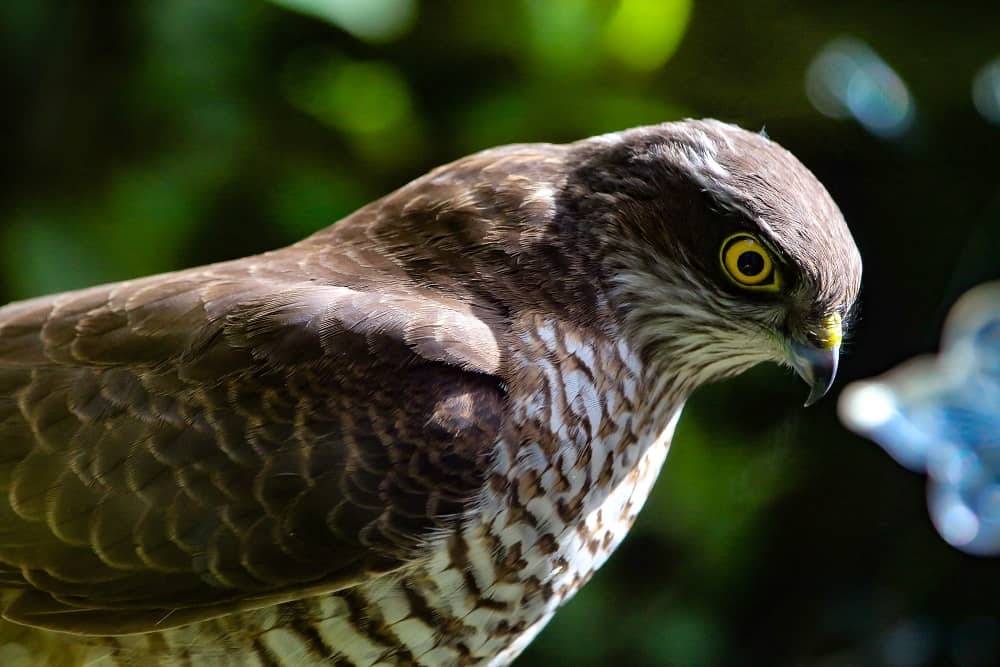
Merlins are small birds of prey that are spread all over Florida. It is estimated that they are not so common for observation and may not like to fly so much.
In addition, they are unpredictable in terms of their limits. They are slightly larger than the American kestrel and are characterized by a stockpile, sharp-pointed wings, and a medium-length tail.
Merlin is usually found in men with a black to silver-gray waist. It also has feathers and a light-colored (slightly orange) chest.
If you look at the artificial nature, their color depends on their specific range and if they are male or female. Females are lighter than males and have dark brown on the back and white spots on the bottom.
Habits and Behavior
Depends a bit on the specific habitat they use as they spend most of their time hunting or migrating.
They live in specific areas of the region such as bushes, meadows, parks, cemeteries, prairies, coastal areas, and rivers. This type of falcon lives in more famous places in Florida.
These raptors migrate and move around. In their routine, they mostly migrate south after the cold weather but there are a few places where you can see Merlin all year round.
- Length: 9-13 inches / 23-33 cm
- Weight: 4.4-10.6 oz. / 125-300 grams
- Wings: 21-23 inches / 53-58 cm
How do you tell the difference between a hawk and a falcon?
Characteristics of the Hawks
Hawks belong to a wide range of raptors, which from a party point of view are actually two categories in the Hawk family -Forest Hawks (accipiters) and Open Country Hawks (buteos). Hawks have wide wings that they use to soar in the sky and can be used to move around. They also have thick, medium-sized carcasses that resemble a healthy bird. Hawks also have long tails.
There are more than 270 species of hawks in the world, including:
- Red-tailed hawk
- Bat hawk
- Sharp-shinned hawk
- Red-shouldered hawk
- Northern harrier
- Cooper’s hawk
- Sparrow hawk
- Goshawk
Characteristics of the Falcons
If we talk about falcons, they are shorter than hawks and their bodies are thinner. The wings have been shown solely to give a sense of proportion. Because of these wings, they hunt faster to dive. There are about 40 species of falcons, including:
- Peregrine falcon
- American kestrel
- Merlin
- Lanner
- Gyrfalcon
Where Do Falcons Nest?
Besides their home in the sky, where do falcons nest? Maybe the most popular question on your mind. Whether it’s a peregrine falcon nesting in an abandoned quarry or a stork-built nest on a tall mountain, this fascinating bird is the perfect subject for children.
They may wonder where falcons find their nesting site, but this information will help you understand where they live and breed.
Peregrine falcons typically nest on cliffs, boulders, and ledges. The Canadian Arctic is another popular location for these raptors to breed. Similarly, they may also use abandoned stick nests of other species to build their own nests.
These birds are also known to nest in abandoned tree cavities and on electric pylons. They may also build their nests on transmission towers or channel buoys.
Peregrine falcons often return to the same location where they fledged their first year. They may feed the young females at the same cliffs that the resident pair used to nest.
Or, they may be subadults raised on the same cliffs as the adults. In some cases, a male may feed a single female in one year, and both females may eventually become parents. However, in most cases, they will stay together throughout their life.
Peregrine falcons usually nest on cliffs, which can be between 25 and 1300 feet high. They usually nest on ledges that are one-third of the cliff’s width.
Peregrine falcons are also known to use abandoned nests, such as a ledge on a skyscraper or bridge. This may be because they’re more likely to be able to locate a nest on a steep slope if their nesting cliffs are close to a body of water.
Peregrine falcons reach breeding maturity around two years old. They also perform aerial acrobatics to attract a mate.
Then, a clutch of four eggs is laid, usually in the spring. The nesting pair will aggressively defend their nests, and if they’re harassed or threatened, they’ll abandon the nest.
That’s why observing nesting peregrine falcons is essential. If you’re lucky enough to catch them, you might even spot the nest of one of them.
Peregrine falcons tend to concentrate along defined migration routes. Historically, they occupied the Arctic and Central America.
Their nesting sites were at the edges of lakes, mudflats, and mountain chains. These areas also provide abundant prey for them. They also nest in cities, where they can nest in skyscrapers and other buildings. However, they are not reliant on any specific habitat.
The main reason for this is the fact that they can find food in almost any area, but are most common in mountain chains and barrier islands.
Peregrine falcons prefer cliffs and mountain areas, and they can be found in many places. Their habitats are influenced by local availability of prey and the probability of human disturbance.
Peregrine falcons are not found in dense forests, so they’re likely to nest in open areas, such as canyons and mountain valleys. In the Pacific Northwest, their habitats include forests with riparian vegetation, wetlands, and cliffs.
Do Raptors live in Florida?
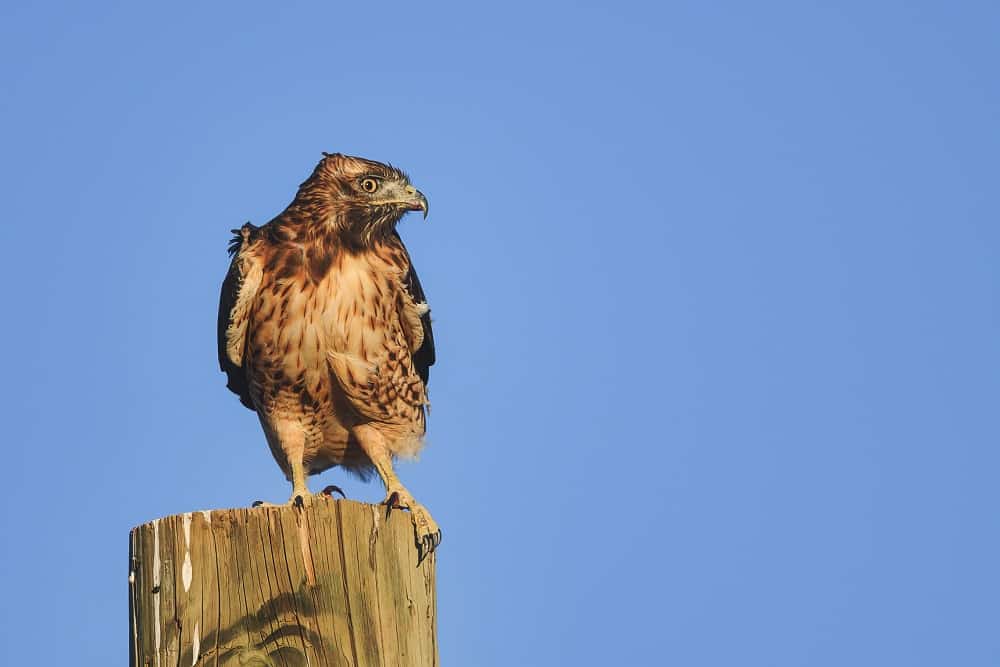
Most Florida raptors are found throughout our state year-round and continue their minimum migration. However, there are always exceptions. To learn more, here are some common raptors found in Florida.
- Bald Eagle
- Red-Shouldered Hawk
- Red-Tailed Hawk
- Swallow-Tailed Kite
- Crested Caracara
- Merlin
- Turkey Vulture
- Black Vulture
The movement of these receptors is caused by seasonal movements throughout Florida.
What is the most common hawk in Florida?
The red-tailed hawk is present throughout Florida mostly:
Red-tail hawks are the most common hawks in North America and their numbers can be seen visually. These giant hawks roam throughout Florida and most of North America throughout the year. They actually go upstairs in search of prey with their amazing vision.
How to Identify a Falcon
In order to distinguish between a hawk and a falcon, the wings are different. A hawk’s wings are narrow and rounded, while a falcon’s wings are long and slender.
While some species of hawk have separate feathers on their ends, others are completely white. Although the two birds’ heads are similar in shape, they are different in appearance. The hawk has a round head, while the Falcon’s is long and pointed.
The first thing to know about a falcon’s wings is that its flight is batty. The flight of a falcon is fast and powerful, and its wing beats are short and elastic.
Its head is small, and its beak is narrow and rounded, but it ends in a distinctly overlapping hook. The lower beak also has a corresponding notch, called a tomial tooth.
While eagles and hawks share some characteristics, they are easily distinguished by their size and plumage. Eagles have the largest body size, long wingspan, massive feet, and wedge-shaped tails.
The other key feature to identifying a falcon is its distinctive wing shape and agility. Hawks are medium-sized birds of prey and can range from a small kestrel to a peregrine falcon.
The beaks of a falcon and a hawk are different. A hawk’s beak is angular, while a falcon’s is long, pointed, and smooth.
Both birds use their strong talons to kill prey. While their wings are similar, the talons of a falcon are sharp and pointed. Hawks are more agile and can change directions quickly.
When looking for a falcon, physical characteristics are crucial. For instance, a peregrine falcon has a narrower body than other raptors.
It also has a short, straight tail and yellow eye circles.
While its wingspan is larger than other raptors, its appearance can make it difficult to identify. Despite their size, these birds are amazing to watch in flight. And if you’re lucky, you can catch a glimpse of a peregrine in action.
Peregrine falcons are a good example of this. Adult males have slate gray-black backs with black spots. Juveniles have pale necks.
Their wings are striped with black and white. Their underparts are gray-brown. Peregrine falcons are much larger than their male counterparts. They’re also faster than their male counterparts. These birds fly fast and can even fly away when they don’t see you.
If you’re lucky enough to catch a glimpse of one, you’ll know which one you’re looking at. The Crested Caracara is also in the Falcon family.
This bird prefers open country environments and looks more like a long-winged Buteo. Although it’s rarer than the Peregrine, it is not entirely absent in our region.
When it comes to nesting, falcons do not bother humans. They lay eggs on outcrops or cliffs. They also use sparse sticks for nests, which is why you rarely see them in the wild.
They lay between one and five eggs per year, which hatch after thirty days. Their eggs are white, but they may have brown speckles. You can usually tell which one you are looking at by the shape of its head and tail.

What is the Most Common Falcon?
There are many types of falcons, and peregrine falcons are perhaps the most popular. Peregrine falcons are extremely fast – they can dive at speeds of up to 200 mph!
These birds hunt for a variety of food, including shorebirds, starlings, pigeons, and songbirds. Because of their speed, they are considered the fastest bird in the world.
Peregrine falcons are the most commonly seen falcons, but there are several other species you can see around your city. This bird flies much faster than other falcons of similar size and weight.
Their sharp, “V”-shaped tomial tooth is used to slice vertebrae from prey. Their nostrils are lined with tubercles, which act as air baffles. Their dark-colored malar stripes and cap-like pattern also reduce glare.
A peregrine falcon is a huge carnivore that lives in central and southern parts of the United States. It feeds mostly on medium-sized birds, including songbirds and waterfowl, although they will also occasionally take bats, mice, and insects.
Their habitat varies from arid, deserts, to tropical regions. The peregrine is the most common falcon in the United States, and its habitat is primarily in South and Central America.
A peregrine falcon is the most widespread of the peregrine falcons, ranging from the Aleutian Islands to coastal Alaska. In the spring, when nestlings are hatched, they are vulnerable to collision with buildings and airplanes, and their eggs are often discarded or drowned when they fall from buildings or bridges.
The Peale’s peregrine nests also use similar habitats, including arid savannah, shrubland, and tundra.
The American kestrel is the smallest falcon found in Indiana. This cavity-nesting bird readily accepts nest boxes in open spaces.
Its cousin, the Cooper’s hawk, is slim and similar in size to the Peregrine. The male has a dark blue-gray back and wing color. The adult Cooper’s hawk has rust-colored barring around its head.
While the American Kestrel is widely distributed throughout North America, the smaller Barbary falcon is not. It lives in a range of habitats, including urban areas, including urban sprawl.
It is also very common in large cities. The American Kestrel is the most common falcon in the United States. They hunt small rodents, insects, and birds. And they look different in male and female forms.
The Prairie Falcon, a type of raptor that is found in western regions, is often found perched on fence posts and cliffs. They feed mainly on small mammals, but will also eat other birds.
Their distribution area is mostly in the western half of the United States, Canada, and Mexico. You can easily identify the Prairie Falcon if you have binoculars handy.
The Peregrine falcon is the fastest bird in the world, and hunts medium-sized birds. It was almost eradicated from eastern North America during the 20th century but has since made a miraculous recovery.
You can see the Peregrine Falcon in large urban centers. Its popularity led to the development of methods to handle captive falcons. You can see this incredible animal in large cities all over the world.
If you’ve ever wondered, “Do falcons fly at night?” you’re not alone. Despite being nocturnal, many falcons do not fly at night.
But there are some interesting facts about this magnificent bird.
Peregrines are very efficient at predicting when to migrate. They rely on the amount of daylight that exists in a day to do their job.
Their behavior is influenced by this, and they follow this cue to the letter. The peregrine falcon has the most unusual behavior of any bird. The only time it flies at night is when its pack gives it a signal to fly north.
Peregrine falcons hunt at night, while Golden eagles and Bald Eagles prey on their young. The young of these birds have no defenses, so they rely on their parents for protection.
But they are protected as “least concern” species, meaning that they cannot be hunted for their meat. But there are a few other interesting facts about falcons you can learn from this article.
The Peregrine Falcon is one of the most popular birds in the world. They have excellent eyesight and can hunt in dim, evening light.
They can also fly at high altitudes, making them a perfect hunting perch. And their eyesight means that they can see better when their heads are turned. But they don’t always hunt at night, and if they do, they don’t do so very often.
What to Do If You Find a Falcon
If you’ve ever seen a falcon, you probably wondered what you should do next. Here are some helpful tips. First, do not attempt to kill the falcon.
Instead, try to calm it and give it a place to land, so it doesn’t feel threatened. A falcon’s warning call will help you determine what to do next. And don’t forget to get the bird’s name.
Falcons have distinctive color bands that are field-readable alpha-numeric coded. In the Eastern US, falcons have bands that are BLACK over RED (1989-2004) or BLACK over GREEN (2000-present).
You can distinguish the two types of bands by observing the top character orientation and background color. The bottom character code indicates the location of the falcon’s nest.
Falcons often visit their nest several times a day. Males sit on the eggs and provide protection for the eggs. Females, however, do most of the incubating.
The male provides food for the eggs, both during incubation and after hatching. The young falcons grow rapidly and will reach ten times their original weight at about three weeks old. Once the chicks are strong enough to fly, the falcons will take over their territory and become the dominant species of the area.
Their dazzling speed makes them extremely dangerous predators. Whenever you see one of these majestic birds, be sure to give it your all. And keep going, when trouble comes.
You can never tell when one will strike. If you see a falcon, give your life your all and keep pushing on when trouble hits.
The presence of falcons in Florida is a fascinating phenomenon that has sparked a great deal of speculation. While some believe it’s all part of an elaborate avian takeover, the reality is much less dramatic.
These striking birds have simply chosen Florida as their winter getaway, drawn to its warm climate and abundant prey.
So next time you spot a falcon soaring through the sky or perched atop a palm tree, remember they’re just enjoying their own version of a tropical vacation.
And who can blame them?
After all, we could all use a little sunshine and relaxation. So let’s raise our binoculars and toast to these majestic visitors – may they continue to grace our skies for years to come!

